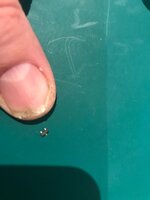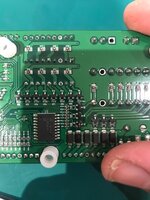hello folks
got a lamp matrix issue on whitewater. whenever a lamp in any column and row is on it also lights the corresponding lamp in column 4. eg if column 2 row 4 is on then. col 4 row 4 is on. and if col 1 row 5 is on then col 4 row 5 will also be on.
the col 4 lamps are not on all the time either.
this machine has led ocd fitted so that complicates matters a bit.
i guess it’s probably the tip107 transistor that controls column 4 it looks like it’s always “on”. or suppose could be the ic further down the line
i suppose it’s time to dig out the logic probe and take a look [emoji102]
any suggestions on what to try most gratefully received
Sent from my iPhone using Tapatalk
got a lamp matrix issue on whitewater. whenever a lamp in any column and row is on it also lights the corresponding lamp in column 4. eg if column 2 row 4 is on then. col 4 row 4 is on. and if col 1 row 5 is on then col 4 row 5 will also be on.
the col 4 lamps are not on all the time either.
this machine has led ocd fitted so that complicates matters a bit.
i guess it’s probably the tip107 transistor that controls column 4 it looks like it’s always “on”. or suppose could be the ic further down the line
i suppose it’s time to dig out the logic probe and take a look [emoji102]
any suggestions on what to try most gratefully received
Sent from my iPhone using Tapatalk


